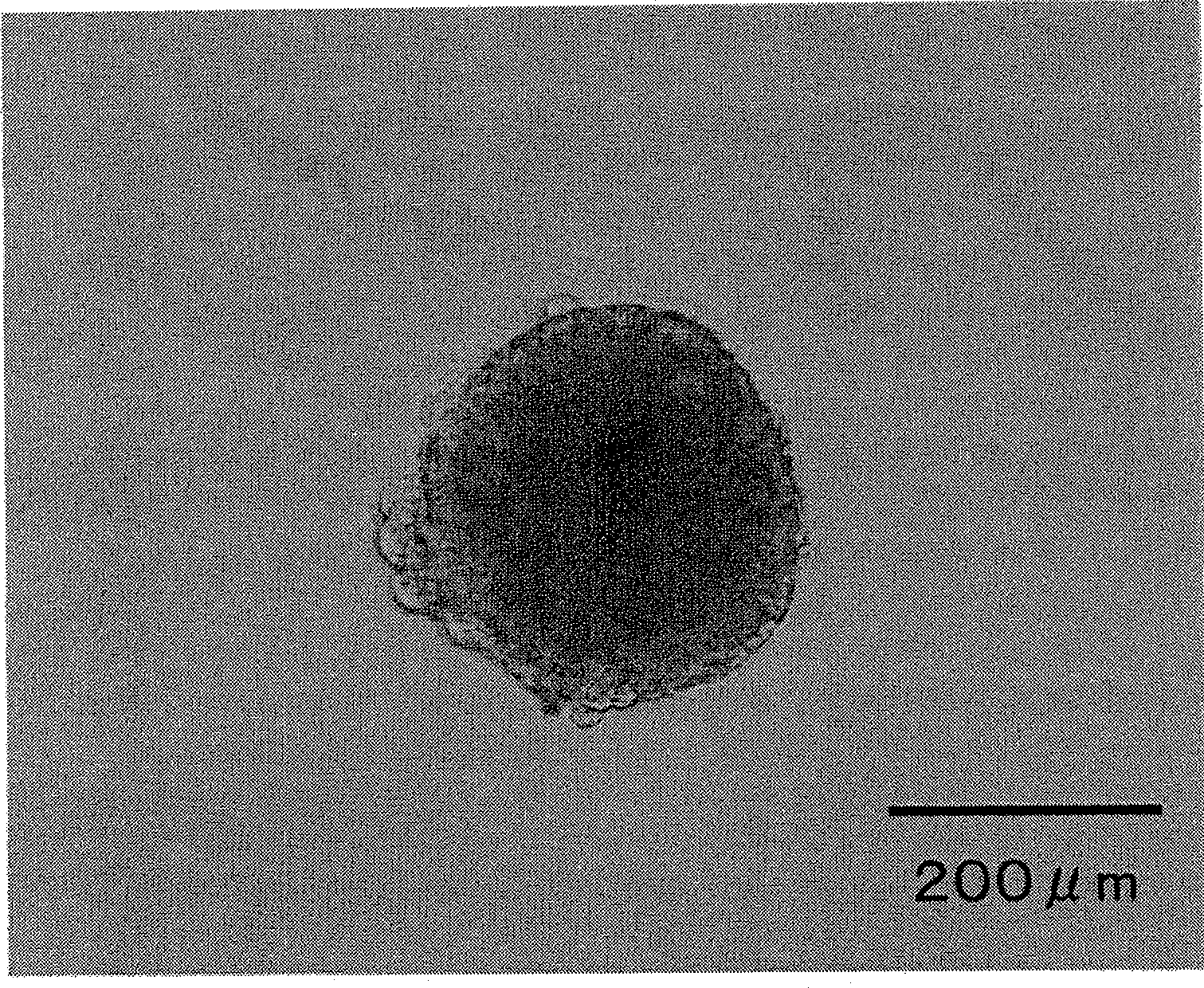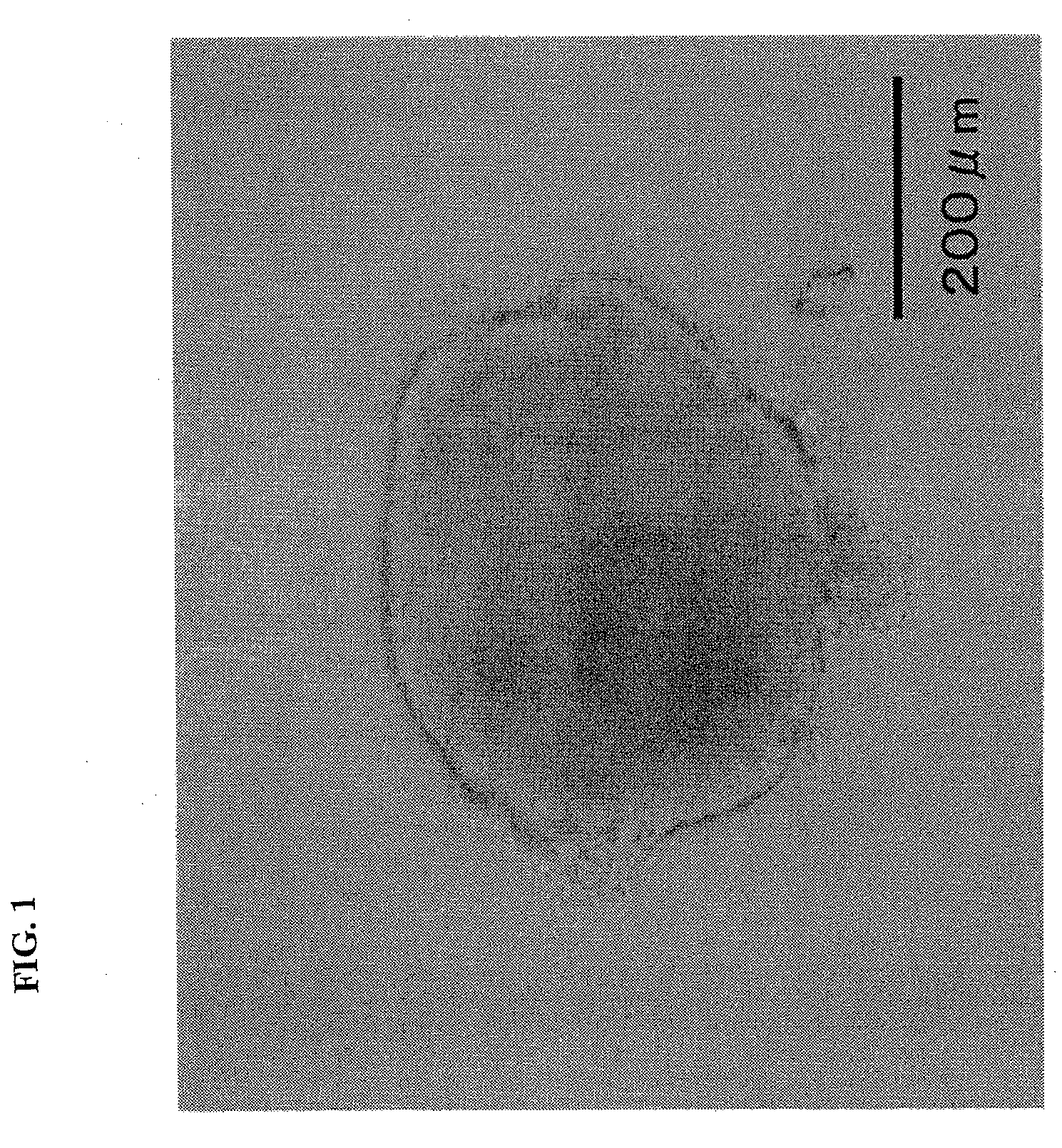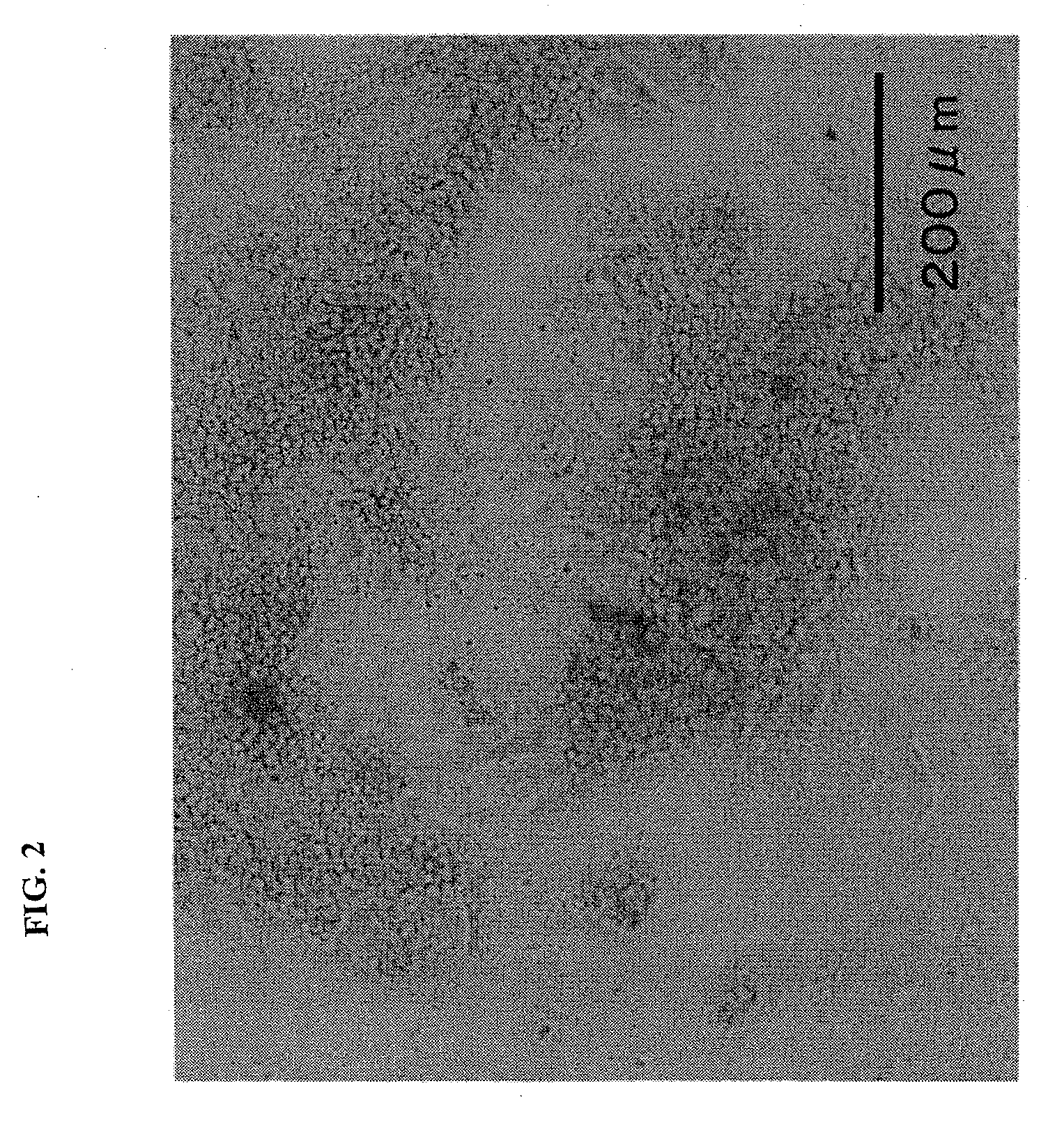Container for germ layer formation and method of forming germ layer
a germ layer and container technology, applied in the field of embryoid container, can solve the problems of impeded embryogenesis research, extreme complexity in culture preparation and handling,
- Summary
- Abstract
- Description
- Claims
- Application Information
AI Technical Summary
Benefits of technology
Problems solved by technology
Method used
Image
Examples
synthesis example 1
[0050]35.7 g of MPC and 4.3 g of n-butylmethacrylate (BMA) (MPC / BMA=80 / 20 (by molar ratio)) were dissolved in 160 g of ethanol, placed in a four-neck flask, and bubbled with nitrogen for 30 minutes. 0.82 g of azobisisobutyronitrile was added at 60° C., and reacted for polymerization for 8 hours. The obtained polymer liquid was added dropwise into 3 L of diethyl ether under stirring, and the resulting precipitate was recovered by filtration, and vacuum dried at room temperature for 48 hours, to obtain 29.6 g of powder. The weight average molecular weight of the obtained powder measured by GPC under the following conditions, was found to be 153000. Compositional analysis by 1H-NMR revealed that MPC / BMA=80 / 20 (by molar ratio). The powder is designated as copolymer (A).
[0051](1) Sample: A sample was dissolved in a chloroform / methanol (6 / 4 (by volume)) mixed solvent containing 0.5 wt % lithium bromide to prepare a 0.5 wt % polymer solution. The amount of the sample solution used was 20 L...
synthesis example 2
[0052]38.0 g of MPC and 2.0 g of glycidyl methacrylate (GMA) (MPC / GMA 90 / 10 (by molar ratio)) were dissolved in 358 g of isopropanol, placed in a four-neck flask, and bubbled with nitrogen for 30 minutes. 2.18 g of a toluene solution of 20 wt % t-butyl peroxypivalate was added at 60° C., and reacted for polymerization for 5 hours. The obtained polymer liquid was added dropwise into 3 L of diethyl ether under stirring, and the resulting precipitate was recovered by filtration, and vacuum dried at room temperature for 4.8 hours, to obtain 28.4 g of powder. Compositional analysis of the powder by 1H-NMR revealed that MPC / GMA=90 / 10 (by molar ratio). The weight average molecular weight measured by GPC under the same conditions as in Synthesis Example 1 was found to be 53000. The powder is designated as copolymer (B).
synthesis example 3
[0053]12.6 g of MPC, 8.6 g of BMA, and 6.0 g of GMA (MPC / BMA / GMA=30 / 40 / 30 (by molar ratio)) were dissolved in 358 g of isopropanol, placed in a four-neck flask, and bubbled with nitrogen for 30 minutes. 2.18 g of a toluene solution of 20 wt % t-butyl peroxypivalate was added at 60° C., and reacted for polymerization for 5 hours. The obtained polymer liquid was added dropwise into 3 L of diethyl ether under stirring, and the resulting precipitate was recovered by filtration, and vacuum dried at room temperature for 48 hours, to obtain 28.4 g of powder. Compositional analysis of the powder by 1H-NMR revealed that MPC / BMA / GMA=30 / 40 / 30 (by molar ratio). The weight average molecular weight measured by GPC under the same conditions as in Synthesis Example 1 was found to be 42000. The powder is designated as copolymer (C).
PUM
| Property | Measurement | Unit |
|---|---|---|
| temperature | aaaaa | aaaaa |
| concentration | aaaaa | aaaaa |
| density | aaaaa | aaaaa |
Abstract
Description
Claims
Application Information
 Login to View More
Login to View More - R&D
- Intellectual Property
- Life Sciences
- Materials
- Tech Scout
- Unparalleled Data Quality
- Higher Quality Content
- 60% Fewer Hallucinations
Browse by: Latest US Patents, China's latest patents, Technical Efficacy Thesaurus, Application Domain, Technology Topic, Popular Technical Reports.
© 2025 PatSnap. All rights reserved.Legal|Privacy policy|Modern Slavery Act Transparency Statement|Sitemap|About US| Contact US: help@patsnap.com



